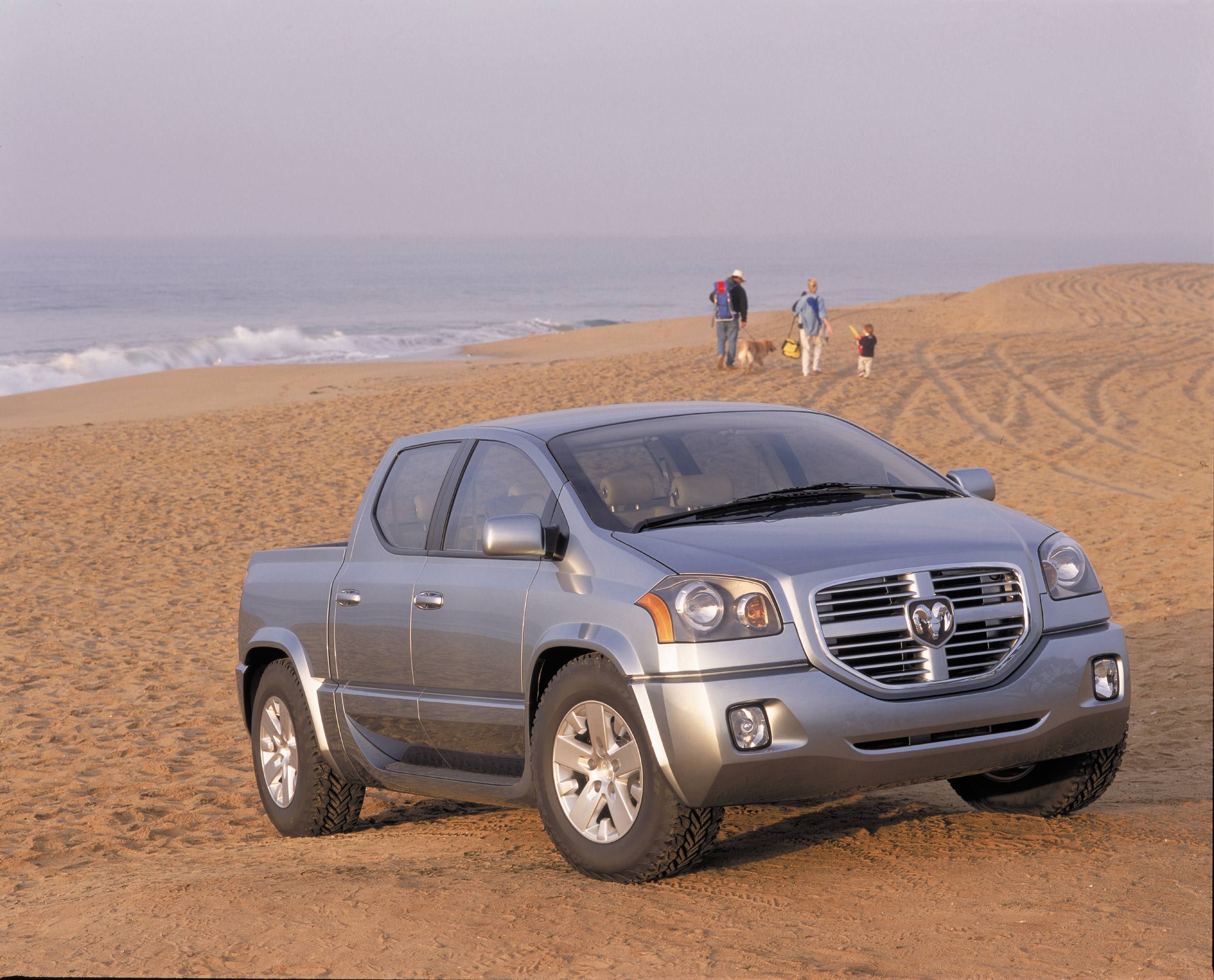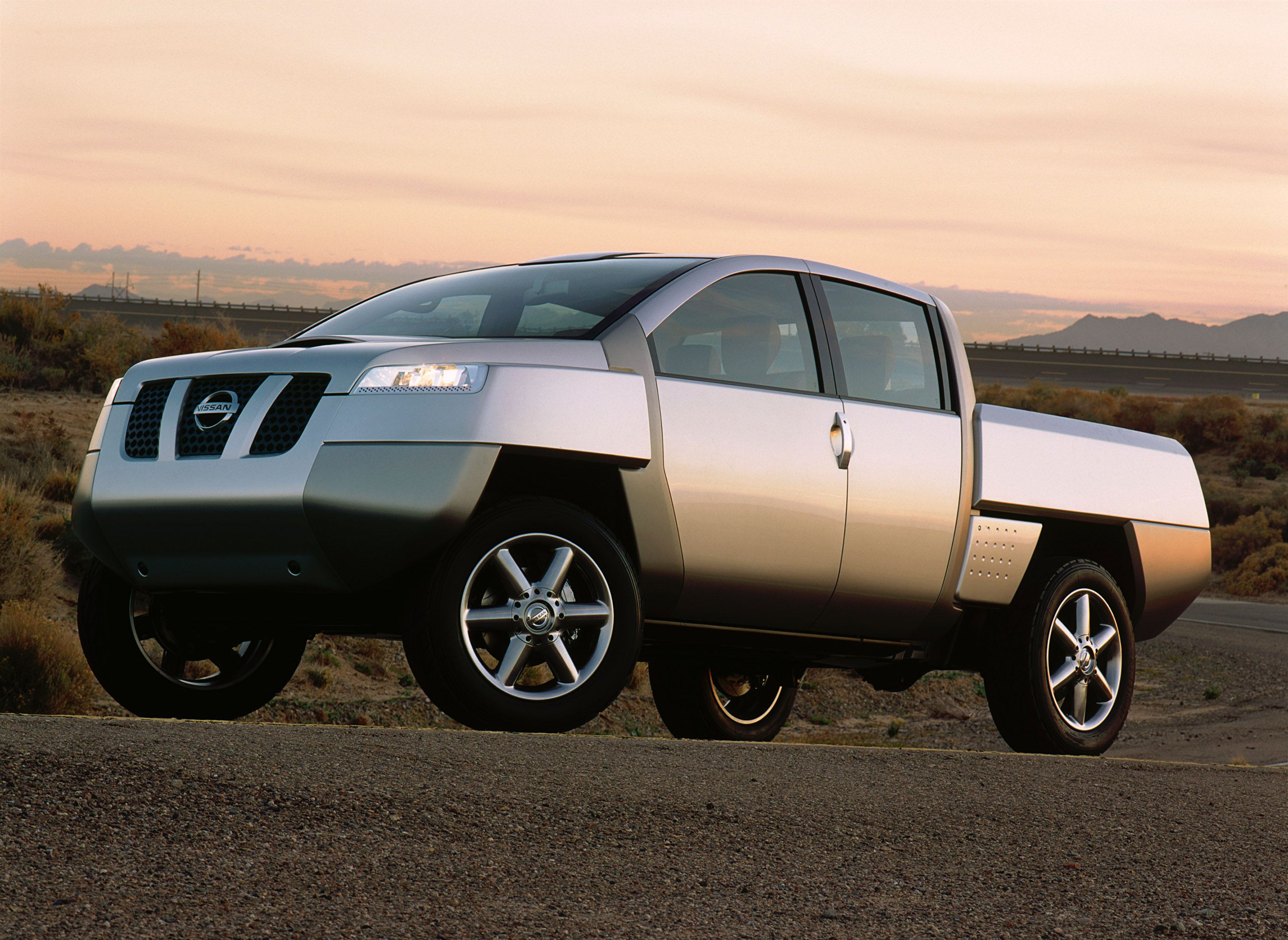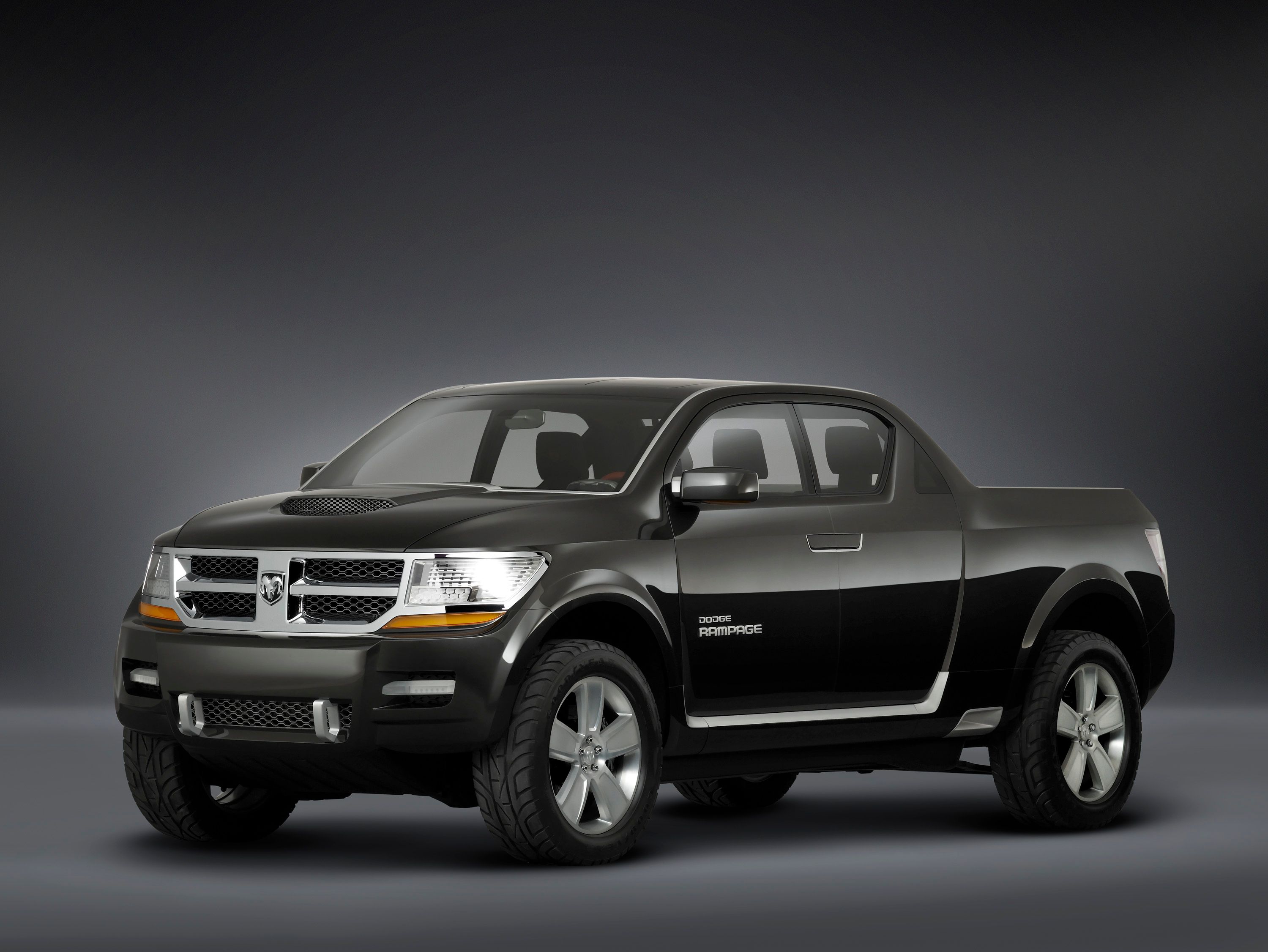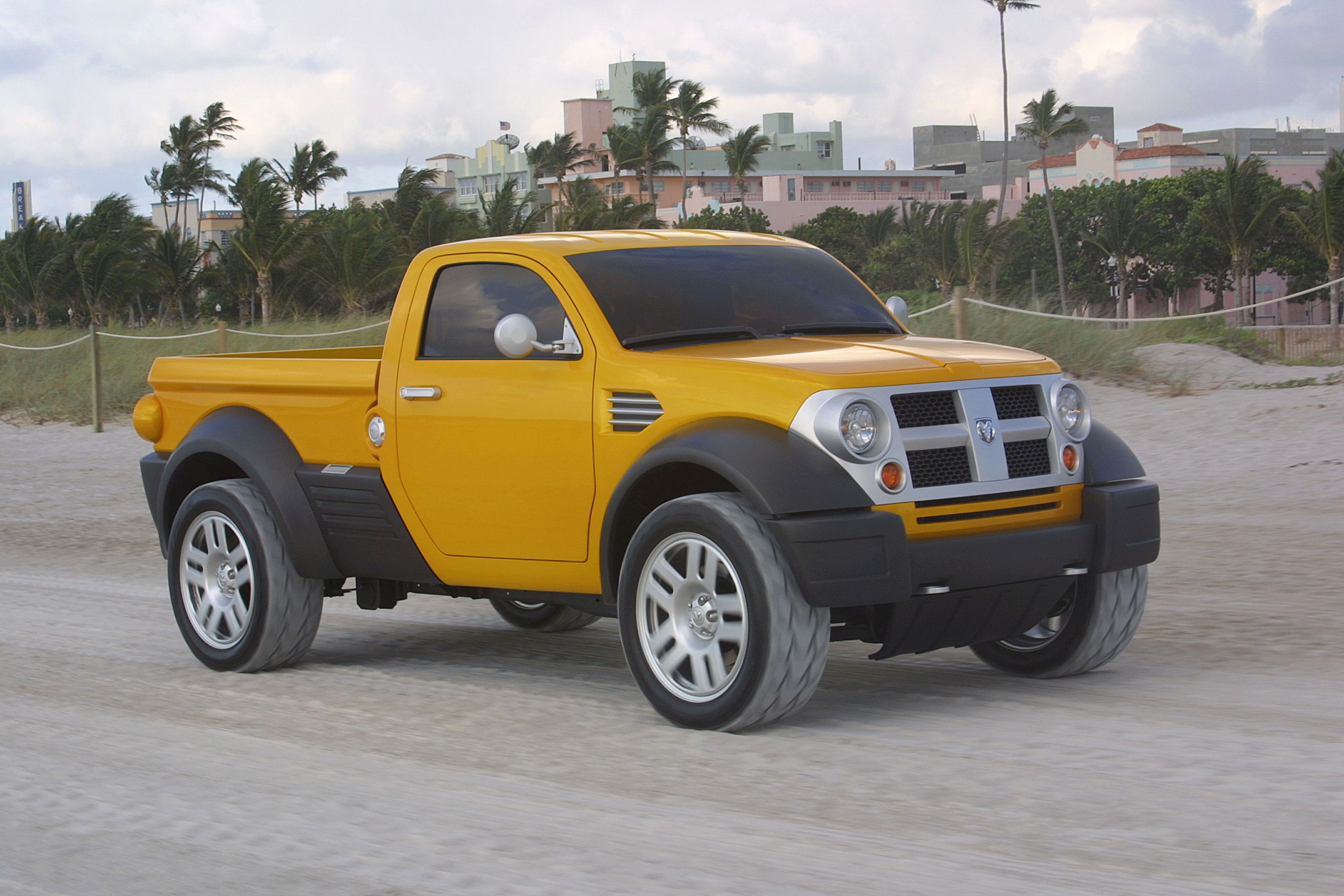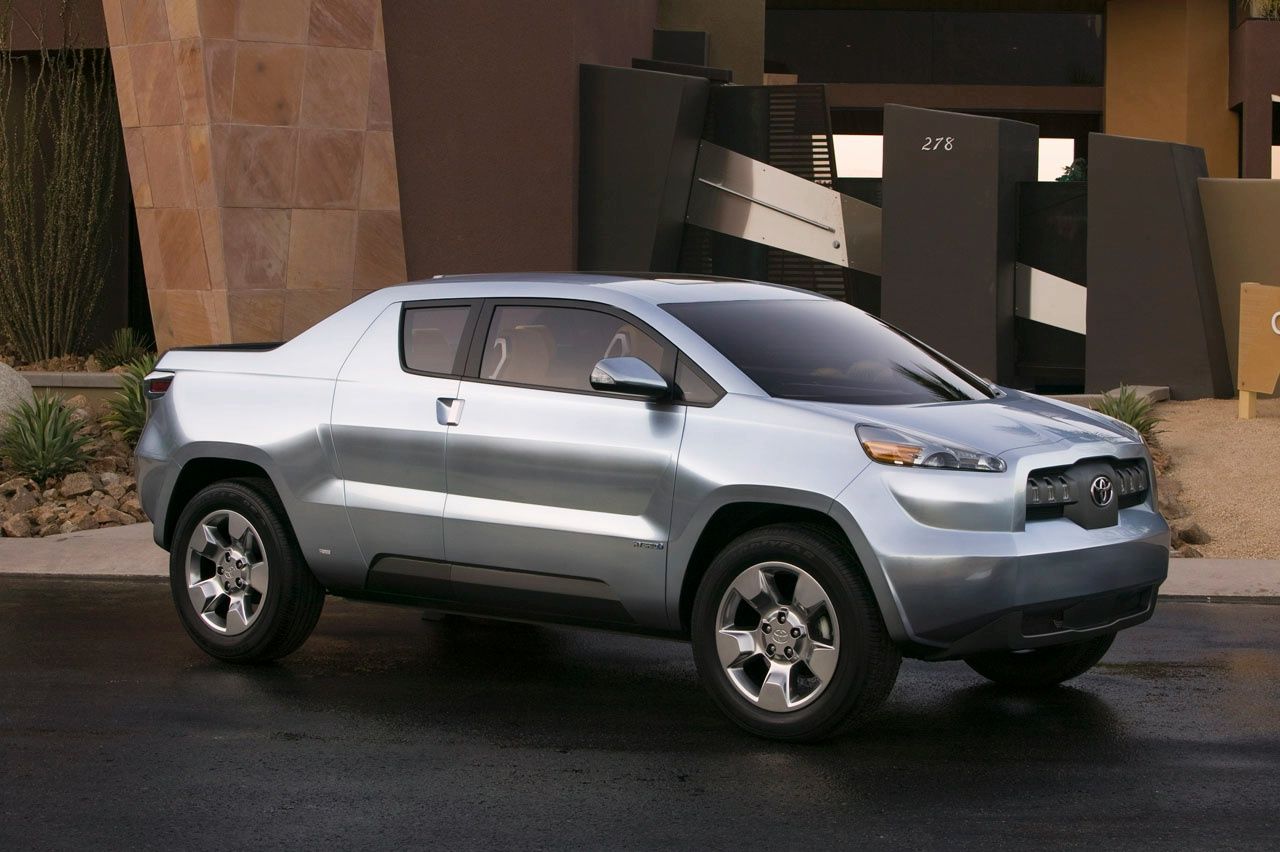SUVs may have taken over the auto world, but they’re not the only vehicle types that are the rage these days. Pickup trucks have exploded in popularity too, in large part because of their versatility, functionality, and all-around capabilities. A lot of today’s pickups were born from ideas that were developed over time in the past. Some ideas took longer to marinate while others arrived like Eureka moments. Oftentimes, these ideas evolve into concept vehicles, and depending on how the public reacts to these concepts; they either end up on the shelf or on the production line. On that note, a lot of concept pickups have been introduced in past years, including these eight forgotten models that deserve to have their names return to the spotlight, even for just a fleeting moment.
2001 Nissan Alpha-T Concept
Back in 2001, Nissan hadn’t fully established itself as a household name in the pickup truck segment. That changed in 2001 when the Japanese automaker unveiled the Alpha-T Concept at the North American International Auto Show in Detroit. The Alpha-T Concept was a game-changer for Nissan. It also came with a deep bed with low-hinged electronic tailgate and a power-operated slide-out bed floor. The interior was dressed up in orange, which didn’t age well when you look at it now, but it was fancy 17 years ago. Under its hood sat a 4.5-liter V-8 engine that produced 300 horsepower. The engine was mated to a four-speed electronically controlled automatic transmission that sent power to all four wheels. The Nissan Alpha-T Concept looks weird today, but back then, it drew enough of a reaction that Nissan went all-in on the full-sized pickup market.
2000 Dodge MAXXcab Concept
It’s a weird feeling sometimes to look at concept vehicles from the 2000s and realize how much more advanced today’s concepts look compared to that time. A perfect example of that is the Dodge MAXXcab, a four-door sports utility pickup that Dodge described as a “Passenger Priority Truck.” It also had a cab-forward stance that allowed it to function as, in Dodge’s words, “an office-on-wheels or as a mobile daycare center.” The MAXXcab also came with a bed that measured 52.7 inches long, 56.7 inches wide, and 24 inches deep. Those numbers were tremendous at that time. Somewhat surprisingly, Dodge didn’t release the output figures of the MAXXcab’s 4.7-liter Magnum V-8 engine, but it did say that the unit was coupled to a multi-speed electronic automatic transmission that allowed the concept to sprint to 60 mph in 7.7 seconds and hit a top speed of 115 mph.
2006 Dodge Rampage
The Dodge Rampage Concept took the 2006 Chicago Motor Show by storm with a fusion of features attributed beyond the pickup segment. It fit the profile of a pickup and had a somewhat traditional-looking fascia, albeit one that has a massive scoop sticking out from the hood. The Rampage’s real claim to fame, however, is its doors. The concept’s interior had its own nod to minivans, specifically in the way the front and rear seats could fold into the floor. If you’re having visions of Stow N' Go seats now, you’re not the only one. The Rampage’s cab also opens up to expand cargo capacity. Great, right? Well, it doesn’t end there. The concept also had a rear fascia that could be flipped down to open a weatherproof sub-cargo bed stowage hold. It’s starting to make sense why the Rampage Concept was a hit at the Chicago Motor Show 12 years ago. And I haven’t even talked about its 5.7-liter Hemi V-8 engine that produced 345 horsepower. It’s a bummer that the Rampage Concept didn’t evolve past the concept stage. It would’ve been cool to see one in the real world.
2008 GMC Denalit XT
If there ever was a pickup concept that I really wanted to see shift into production, it would’ve been the GMC Denali XT Concept. GMC even slotted it in the never-used Sport Utility (SUT) category, though it’s probably better described as a bigger and more sophisticated ute. That would explain a lot, especially when you consider that the concept was the brainchild of Holden Design, the Australian division of General Motors’ global network of designers and engineers. The concept itself was based on the Holden Ute, and it featured sleek-looking headlamps, minimal overhangs, and a low roof profile that gives it somewhat of a restrained aggressive look. The four-seater interior of the Denali XT is also worth mentioning, largely because it was able to successfully blend luxury with functionality. Leather and billet metal were prominent fixtures in the concept’s interior. Under its hood, the Denali XT was no slouch, either. It featured a 4.9-liter V-8 engine that produced 326 horsepower. The output isn’t special in today’s pickup world, but back then, it was enough to get people talking and wishing to see a production version of the Denali XT. Sadly, it never came to pass.
2000 GMC Terradyne
The early 2000s was an exciting time for concept pickups. In the same year Dodge unveiled the MAXXcab Concept, GMC had its own offering called the Terradyne Concept. Nobody was going to mistake one for the other, though. While the MAXXcab Concept was billed as a passenger priority truck, the Terradyne Concept had no such illusions. It was designed specifically for heavy industrial use. It featured an extended cab and a truck bed that can be extended from six feet to eight feet through the versatile use of its tailgate. In the Terradyne’s case, all four doors were designed to slide backward rather than swing outward. It’s the minivan door approach on a pickup, a feature that Dodge also used on the Rampage Concept six years later in 2006. Fancy features aside, the Terradyne’s billing as an industrial workhorse was best represented by its use of a 6.6-liter V-8 engine that produced 300 horsepower. In addition, it also carried a 5,000-watt generator that GMC said had enough power to run an entire house. It seems strange to think of the Terradyne Concept in glowing terms these days, but back then, it was one of the most provocative pickup concepts of its time.
2002 Dodge M80
The Dodge M80 Concept looked like a Hot Wheels toy car come to life. That’s probably the aptest way of describing its appearance, but limiting it to that detail is doing a disservice to Chrysler Group Designer John Opfer’s creation. The M80 Concept was designed to be a “stylish, low-cost, four-wheel drive” pickup, and at the very least, it got the “stylish” part right. The oversized wheel arches on the M80 created enough space to accommodate the massive 20-inch tires from which the concept pickup sat on. The side and rear sections of the concept also featured a classic-modern look. The interior featured a minimalist industrial look, mixed in with splashes of modernity. Under the concept’s hood sat a 3.7-liter V-6 engine that produced 210 horsepower and 235 pound-feet of torque. The engine linked up to a five-speed manual transmission. It also came with a 4-hi/4-lo transfer case that Dodge borrowed from the Jeep Liberty. It’s a shame that the Dodge M80 Concept didn’t come to life when it had the chance. As long as Dodge kept true to the concept’s unique — and attractive design — it probably would’ve become a popular product. Considering customer priorities on pickup these days — towing and payload capacities rule — it’s unclear if that sentiment holds true today.
When you look at the Toyota A-BAT Concept, you probably wouldn’t expect it to be a hybrid pickup, would you? Well, that’s exactly what the A-BAT Concept is. The A-BAT specifically stands for “Advanced Breakthrough Aero Truck.” The aero part of that name is the one that stands out, largely because the A-BAT carries an unconventional design for a pickup. Designers at Calty, Toyota’s research facility in California, specifically designed the A-BAT with aerodynamics in mind. Hybrid status aside, the A-BAT Concept also shared a lot of design details with the Toyota Prius, not the least of which is the trapezoidal shape that becomes evident when you look at both models from the side. The concept’s interior was also equipped with a good amount of technology, including a portable power pack that carries both AC and DC power, a retractable navigation device with a WiFi Internet connection, and solar panels on the vehicle's dashboard that helps capture energy from the sun. At the heart of the concept sat the same Hybrid Synergy Drive system that the Prius also had. It also came with a power-split device that allowed it to qualify as a series-parallel hybrid, opening the opportunity for the electric motor and gasoline engine to work independently of each other or let the gas engine operate to only provide power to the vehicle's electric motor, instead of the vehicle's wheels. The Toyota A-BAT Concept debuted in 2007. More than a decade later, we still can’t get enough of it.
2003 Chevy Cheyenne
We attribute the Cheyenne name to Porsche these days — it’s “Cayenne” in Stuttgart vernacular — but around the same time Porsche unveiled its first-ever SUV, Chevrolet created a concept pickup truck and called it the Cheyenne. Rest assured, the Cheyenne had zero similarities with the Cayenne SUV. Of those designs, a few stood out, specifically the side access doors and the concept’s unique cargo bed. That bed featured storage drawers and side access doors that lets you load an unload cargo from either side of the vehicle. From a design perspective, the Cheyenne wasn’t a looker the way concept vehicles are supposed to look. It did make up for it by boasting a supercharged 6.0-liter V-8 engine that produced 500 horsepower and 580 pound-feet of torque.

